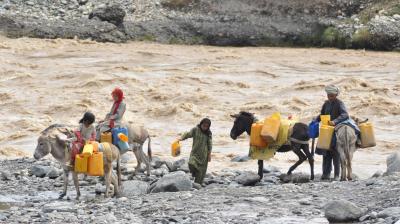State of Global Water Resources 2022
- State of water resources report provides independent global assessment
- More investments and data sharing needed to strengthen water management
- Climate change intensifies extremes like floods and droughts
- Water resource management is at heart of climate action
- Hydrological information supports Early Warnings For All
The hydrological cycle is spinning out of balance as a result of climate change and human activities, according to the WMO State of Global Water Resources Report 2022, which provides an extensive assessment of global water resources.
Droughts and extreme rainfall events are wreaking a heavy toll on lives and economies. Melting snow, ice and glaciers have increased hazards like floods and threaten long-term water security for many millions of people.
And yet, far too little is known about the true state of the world’s freshwater resources. We cannot manage what we do not measure. There must be improved monitoring, data-sharing, cross-border collaboration and assessments of water resources – and an accompanying increase in investments to facilitate this. This is vital to help society cope with increasing water extremes of too much or too little, it says.
The WMO State of Global Water Resources Report 2022 builds on a pilot issued last year. It contains more expanded information on important hydrological variables like groundwater, evaporation, streamflow, terrestrial water storage, soil moisture, cryosphere (frozen water), inflows to reservoirs, and hydrological disasters. It integrates field observations, satellite-based remote sensing data and numerical modelling simulations to assess water resources at the global scale.
Other resources
About the State of Global Water Resources series
The State of Global Water Resources Report, published annually by WMO, provides a comprehensive quantitative overview of global water resources, with a focus on hydrological variability and trends. It supports countries, decision makers and stakeholders in understanding the current state of water resources, identifying hotspots and supporting effective water management strategies. The report is based on data contributed by WMO Members, as well as information from global hydrological modelling systems and satellite observations provided by various partners.






